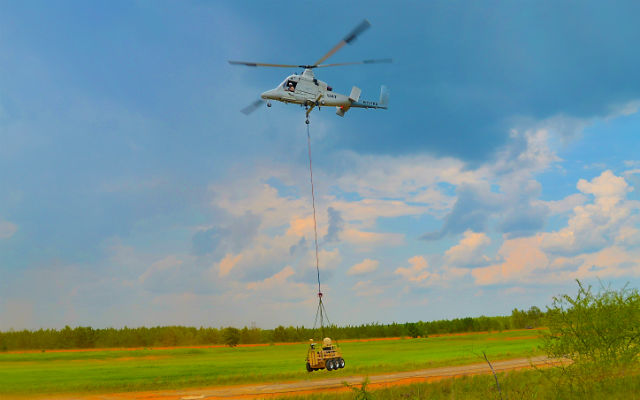The first application for large unmanned air vehicles in the commercial aviation sector is likely to be for cargo transport, however a lack of new designs exclusively for manned freighters suggests that aircraft manufacturers are not prioritising investment in this area.
Alain Lumbroso, economist for the International Transport Forum, points out that automation is not new to commercial air transport, with autopilots present in cockpits - in one form or another - for around 50 years. However, adoption of unmanned passenger flight is many years away, he says, and the technology will lend itself to cargo transport first.
“If there is going to be any sort of penetration of UAS on commercial passenger market it’s going to happen here,” Lumbroso told the SMi UAS conference in London on 20 November. “And as people get used to the vehicle driving itself…eventually it will gain social acceptance that will let UAS move into commercial aviation.”
He claims that the introduction of unmanned cargo transport can provide new point-to-point routes, as well as opening up their use in humanitarian disaster relief delivery, but the development costs have to be kept manageable if they are to be provided by aircraft manufacturers.
“If you put aside Antonov – and they haven’t designed anything new in 30 years – no major Western aircraft manufacturer is actually designing a freighter aircraft,” Lumbroso notes. “They are designing passenger aircraft and they are making a variant that will be a freighter. The [Boeing] 777, the [Airbus] A330, the 747 are all passenger aircraft that happen to carry freight and do it quite well.
“So from a manufacturer perspective, there does not seem to be a visible appetite for a clean-sheet aircraft development that is designed solely as a pure freighter.”
He says that adding “the complexity of making it unmanned” and the associated research and development costs could prevent aircraft manufacturers from investing in this technology, so military development could be one way to access the technology without the financial burden on the commercial OEMs.
“I can understand why the OEMs won’t want to take the risk, and that’s where the military aspect comes in,” Lumbroso notes. “It is something that on the small scale can be developed for the military and with a bit of risk sharing and transfer of technology between the military and commercial world, that is where the first step will be.”
He notes that the gains are relatively small in comparison to the risks in investing in unmanned freighters, so another access to the market has to be utilised.
“That first step might not necessarily come from the private sector that would be taking a lot of risks with potentially very little reward, because any unmanned freighter that may be built would just replace the manned freighter anyway.”

Lockheed Martin
He says the Lockheed Martin/Kaman K-Max unmanned helicopter, which has been used for cargo misisons by the US Marine Corps, is one such example of the military investing to make an aircraft unmanned for this role.
“Large custom-designed aircraft would probably be the best aircraft,” he notes. “It’s better to design something thinking that it is unmanned from the get-go than convert something that already exists. But it would also involve the greatest development risk”.
“It would also be the optimal aircraft in terms of using space because you wouldn’t have to think about parts of the aircraft that are designed for a human, and you could see application on the military and commercial side.”
Source: FlightGlobal.com


























